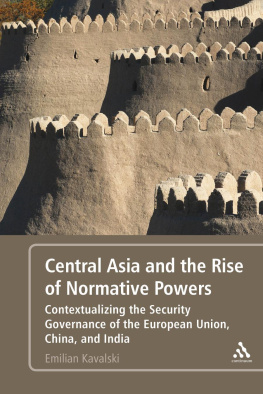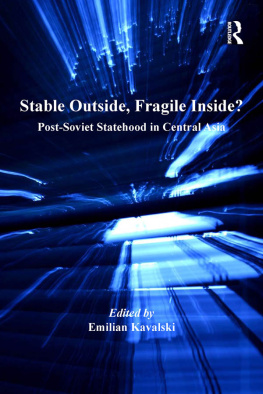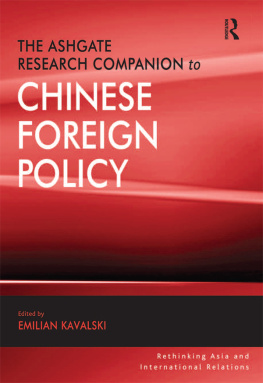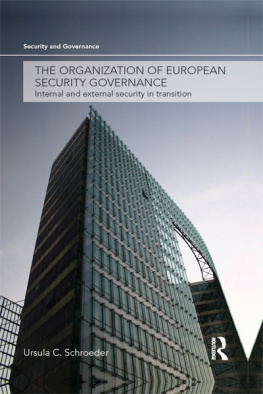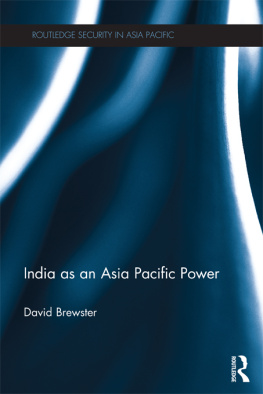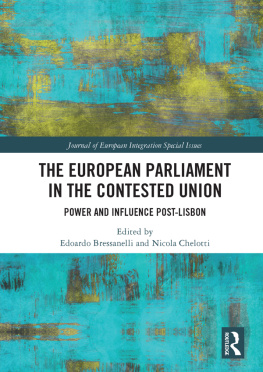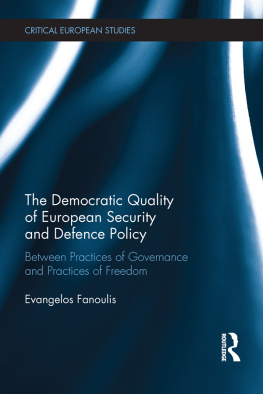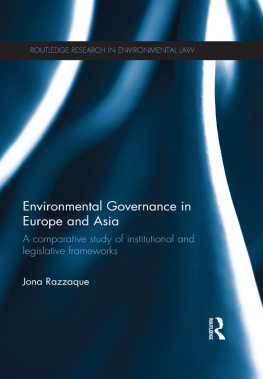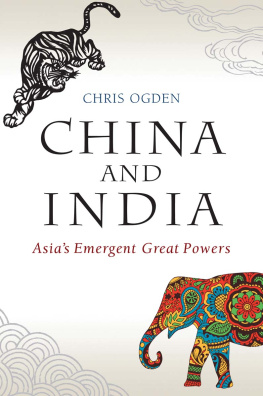Central Asia and the Rise of Normative Powers
Central Asia and the Rise of Normative Powers
Contextualizing the Security Governance of the European Union, China, and India
EMILIAN KAVALSKI
Bloomsbury Academic
An imprint of Bloomsbury Publishing Plc
175 Fifth Avenue | 50 Bedford Square |
New York | London |
NY 10010 | WC1B 3DP |
USA | UK |
www.bloomsbury.com
First published 2012
Emilian Kavalski, 2012
All rights reserved. No part of this publication may be reproduced or transmitted in any form or by any means, electronic or mechanical, including photocopying, recording, or any information storage or retrieval system, without prior permission in writing from the publishers.
No responsibility for loss caused to any individual or organization acting on or refraining from action as a result of the material in this publication can be accepted by Bloomsbury Academic or the author.
Library of Congress Cataloging-in-Publication Data
A catalog record for this title is available from the Library of Congress.
ePub ISBN: 978-1-4411-4753-0
Typeset by Deanta Global Publishing Services, Chennai, India
Contents
T his book took three months to write and three years to complete. I would like to thank my commissioning editor Marie-Claire Antoine for taking on this project when I was already thinking of giving it up and supporting it so enthusiastically. During this period, a number of individuals contributed both directly and unwittingly to the shape and trajectories of this book, and I would like to thank them all. I would like to start with my fellow denizens of the research haven generously provided for us by the Rachel Carson Center (Mnich, Germany). Without their knowing, the complexity of our intellectual conversations and collective fremdschmen provided an important lifeline for this project. Thanks are also due to the participants at the workshop on Comparative Approaches to Regionalism in the Asia-Pacific at Deakin University (Australia), where many of the ideas developed in the following pages were first articulated. In particular, I am grateful to David Hundt, David Walker, Baogang He, Chengxin Pan, and Philomena Murray for their thoughtful comments. Finally, the Taiwan Fellowship offered by the Ministry of Foreign Affairs of the Republic of China (Taiwan) and my hosts at the Institute of Political Studies, Academia Sinica provided an extremely hospitable environment for completing this project. I would especially like to thank Wu Yu-Shan, Chu Chin-peng, Tsai Tung-Chieh, Hung Ming-Te, Liu Tai-Ting, Liu Kuang-hua, Tai Wan-chin, David Lin, and Tom Wilkins for making my stay in Taiwan so worthwhile. Last but not least, the vibrant conversations with my fellow ASIR-ists at the University of Western Sydney sustained this project despite all the frustrations.
Some of the ideas presented in this book offer much revised versions of arguments that have been developed earlier in India and Central Asia: The Mythmaking and International Relations of a Rising Power (I. B. Tauris, 2010); The international politics of fusion and fissure in the awkward states of post-Soviet Central Asia, in E. Kavalski (Ed.), Stable outside, fragile inside? Post-Soviet statehood in Central Asia (Ashgate, 2010); Shanghaied into cooperation: Framing Chinas socialization of Central Asia, Journal of Asian and African Studies 44 (2010); Do as I Do: The global politics of Chinas regionalization in E. Kavalski (Ed), China and the global politics of regionalization (Ashgate, 2009); The complexity of global security governance: An analytical overview, Global Society 22 (2008); and Extending the European security community: Constructing peace in the Balkans (I. B. Tauris, 2008). I would like to thank these journals and publishers for permitting me to use the arguments that first appeared in their publications. I am also grateful to Vladimir Bessarabov from the UN Cartographic Section for granting permission to reproduce the map of Central Asia included in this volume.
Finally, there are more personal thanks to Raycho Kavalski for skyping-in reality on a daily basis and to Magdalena Zolkos both for putting up with and supporting all this, and with apologies that this is not the ostrich-and-chicken book that she would want.
CFSP | Common Foreign and Security Policy |
DCECI | Development Cooperation and Economic Cooperation Instrument |
EIR | European International Relations theory |
ENP | European Neighbourhood Policy |
ESDP | European Security and Defence Policy |
ESS | European Security Strategy |
EU | European Union |
EUSR | European Union Special Representative |
ICG | International Crisis Group |
IOM | International Organization for Migration |
NATO | North Atlantic Treaty Organization |
NGO | nongovernmental organization |
NIS | Newly Independent States |
OSCE | Organization for Security and Cooperation in Europe |
PCA | Partnership and Cooperation Agreement |
PFP | Partnership for Peace Program |
RATS | Regional Anti-Terrorist Structure |
RSP | Regional Strategy Paper |
SCO | Shanghai Cooperation Organization |
TACIS | Technical Assistance to the Commonwealth of Independent States |
TRACECA | Transport Corridor EuropeCaucasusAsia |
UN | United Nations |
UNDP | United Nations Development Program |
USA | United States of America |
USSR | Union of Soviet Socialist Republics |
Figure 1 | The double tension of EUs external affairs |
Figure 2 | The structure of the Shanghai Cooperation Organization |
Figure 3 | The complexity of EU-China-India interactions in Central Asia |
Map 1 | Central Asia |
Central Asia has always been different.
Ahmed Rashid (1994, p. 9)
T he attention to the region-building agency of international actors such as the European Union (EU), China and India are of fairly recent provenance in the study of world affairs. Framed under the label of new regionalism, its discussions have tended to investigate the institutions, policies, and economic relations that underpin such externally promoted region-building approaches. Yet, little attention seems to have been accorded to the strategic storytelling that marks the global politics of new regionalism. If one were to undertake such an exploration, the narrative underpinning of new regionalism would reveal attitudes about self and other that do not transpire in conventional accounts of trade figures, geopolitical interests, and security threats. In particular, the account of the EUs, Chinas, and Indias engagement in various regional contexts uncovers the role of othering as a central feature of the nascent processes of region-building. Indicative of who is positioned inside a community of regional interactions and who is excluded from it, the other provides a tangible frame of reference for the simultaneous recognition and projection of the identity of international actors undertaking the practice of regionalization.

